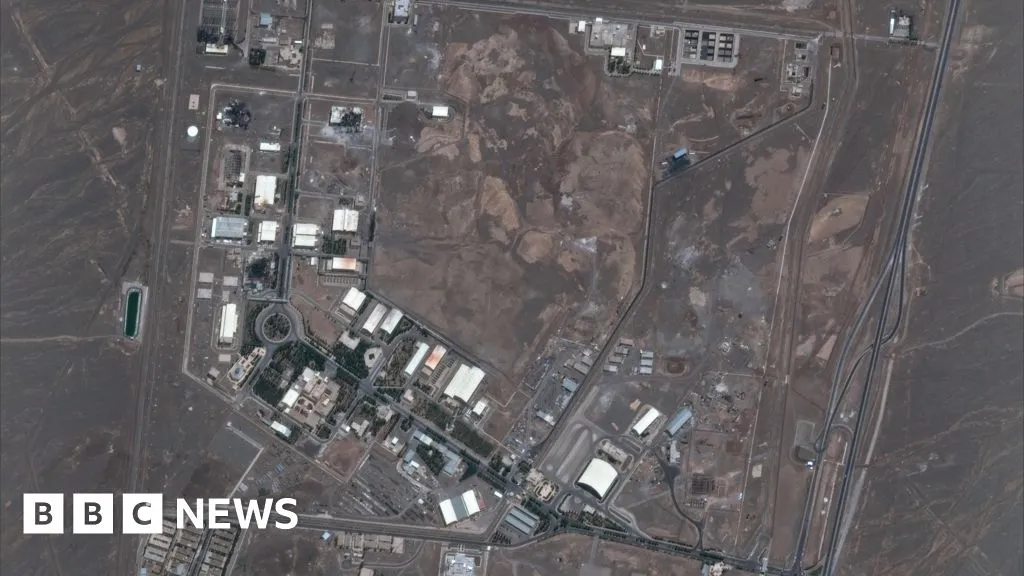Essentially, the more enriched the uranium, the bigger the burst of energy when all those atoms split.
The IAEA said that Iran's uranium had reached about 60% enrichment - so well on its way to being concentrated enough for a nuclear weapon.
But firing a rocket into properly stored stockpiles of enriched uranium would not pose a "nuclear incident" on the same scale as disasters that occured at nuclear power plants in Fukushima or Chernobyl.
"Highly enriched uranium is about three times more radioactive than non-enriched uranium. But in fact, on the scale of things, neither of them are particularly densely radioactive. It wouldn't cause a major environmental contamination problem," explains Prof Jim Smith, from the University of Portsmouth, who has studied the aftermath of the Chernobyl disaster.
"We're more concerned about what are called the fission products - the things that uranium splits up to when it's in a reactor or in a bomb - things like radioactive caesium, radioactive strontium, radioactive iodine. They are more of an environmental contamination issue."
But because no nuclear reaction is taking place at the enrichment sites - and a blast from a bomb would not trigger one - these dangerous radioactive "fission products" would not be present, he said.
Instead the uranium could be dispersed locally by a blast.
At the Natanz facility, after the bombing, the IAEA found radioactive contamination at the site, but they said the levels of radioactivity outside remained unchanged and at normal levels.
"With uranium... the radiation doesn't really travel very far," says Prof Claire Corkhill, Chair in Mineralogy and Radioactive Waste Management at the University of Bristol.
But for people close to the site, there could be health risks, she said.
"In terms of toxicity to the human body, you certainly don't want to breathe in uranium particles and you don't want to ingest them either," she said.
"That's because the uranium particles could become lodged in the cells, inside either your lungs or your stomach, and slowly, radioactively decay, and that will cause damage."
As well as radioactivity, chemical exposure could also be a problem for anyone nearby.
"If there was an incident and the centrifuges were to release the uranium hexafluoride, the gas contained within the centrifuges, then it would be a really severe chemical incident," said Prof Simon Middleburgh, a nuclear materials scientist, from Bangor University.
"If this uranium hexafluoride comes in contact with moisture in the air, it's really quite corrosive and nasty because it can form this very, very strong acid," he said.
"But it's not going to have a massive environmental impact beyond the very, very local area."
The IAEA said its Incident and Emergency Centre had been working around the clock and it would continue to monitor the status of Iran's nuclear facilities and the level of radiation at its sites.
